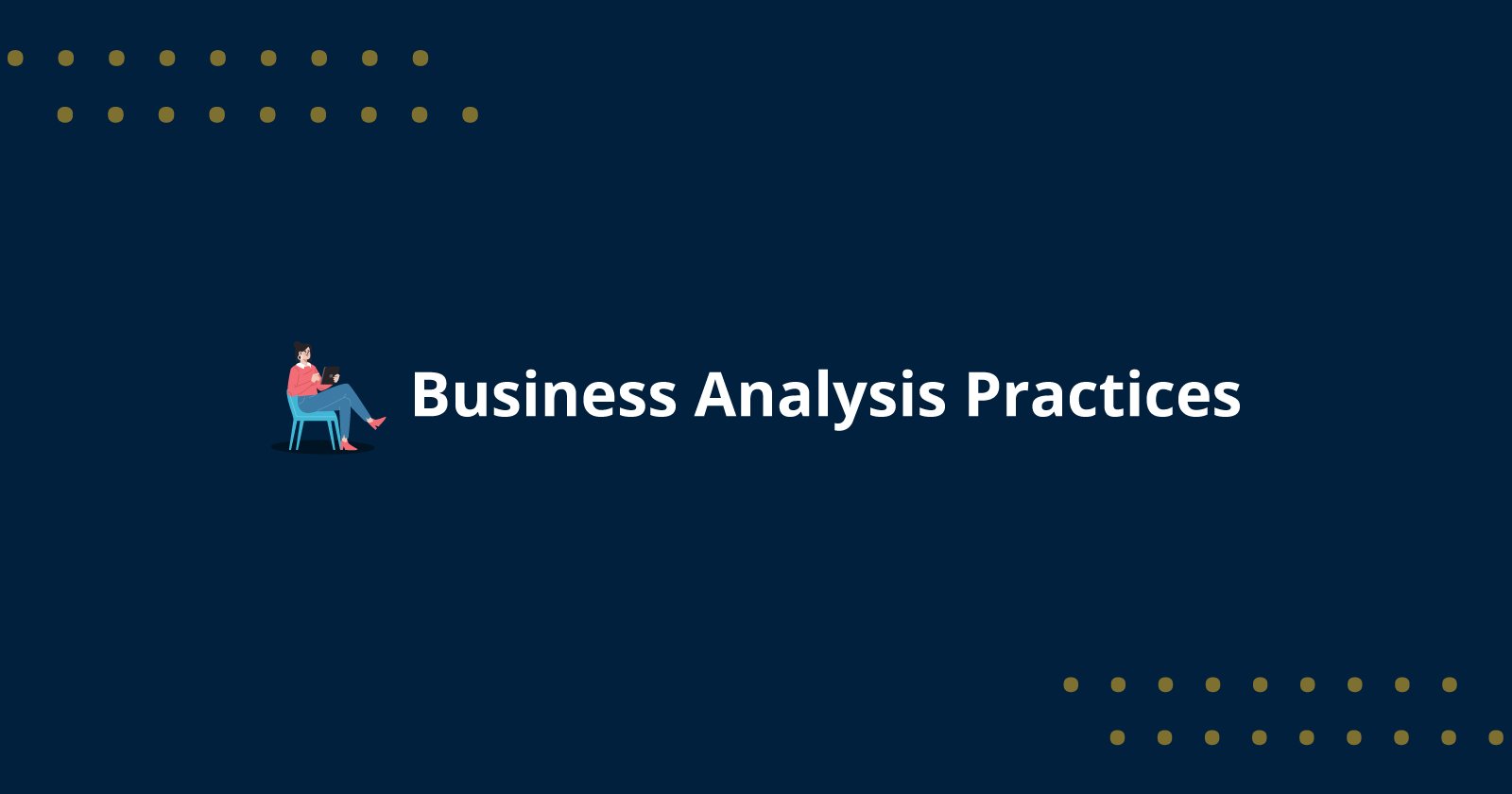Organizations today can no longer ignore the importance of business analysis and its relevance to driving growth, optimizing costs, and developing innovative solutions. It goes beyond simply understanding the problems of one person in the organization. Business analysts' best practices are critical to the change process, the development of new ideas and the delivery of solutions that bring the most significant benefit to all stakeholders.
Best practices around the topic make the task of business analysis, as complex as it is, a bit more manageable - whether you are designing a new leadership plan or implementing organizational culture change, working on best practices to improve workflows, or working with rules-based systems.
This blog highlights 15 ways business analytics can improve value creation, problem-solving, and consumer product creation for business analysts, project managers, and entrepreneurs.
What is Business Analysis?
Business analysis is the practice of interpreting the business requirements, analyzing the problems and designing an action plan to meet the requirements.
It creates a platform for effective change in different areas by applying evidence-based practices and collaborating with stakeholders. Important factors are:
- Identifying Needs: Defining the rationale and scope for change.
- Solution Definition: Developing solutions to maximize value.
- Stakeholder Alignment: Involve stakeholders in refining strategies.
- Continuous Improvement: Leveraging iterative improvements and innovations.
While promoting organizational change by providing order and clarity, Business analysis reduces risk and improves project outcomes.
Why Does Business Analysis Matter?
Business analysis doesn’t just support decision-making; it helps companies adapt to a world driven by disruption, competition, and technology. Organizations with strong business analysis practices see better alignment across teams, improved product or service delivery, and, most importantly, increased ROI.
Top 15 Business Analysis Practices
1. Understand the Role of a Business Analyst
Check what you have to do as a business analyst best practices. You are responsible for the area of process analysis, stakeholder engagement, documenting processes and solutions and, where appropriate, making recommendations that are central to keeping projects together. Don't confuse the role with that of a technical function such as a programmer or designer.
2. Acknowledge the Strategic Value of Business Analysis
Business analysis drives change and fosters innovation. It’s not just about solving problems—it’s the backbone of strategic decision-making. By assessing current systems and aligning them with business goals, BAs help enterprises stay ahead.
3. Develop Communication Excellence
Strong communication is the lifeblood of effective business analysis. Whether it’s gathering requirements, resolving conflicts, or providing updates, clear dialogue with stakeholders ensures everyone’s on the same page.
4. Gain Clarity on Requirements Early
Misunderstood requirements are a root cause of project failures. Start every project by thoroughly documenting goals, constraints, and stakeholder expectations. Use tools like requirement templates or visual diagrams to communicate details effectively.
5. Prioritize Stakeholder Engagement
Stakeholders hold the key to your project’s success. Develop a matrix to identify their influence, needs, and interests. Keeping stakeholders informed and involved will help you manage expectations and drive consensus.
6. Create a Business Analysis Plan
A detailed plan provides structure and direction, helping BAs address objectives systematically. Your plan should outline timelines, deliverables, techniques (e.g., SWOT or PESTLE analysis), and milestones to track progress.
7. Be Open to Alternative Solutions
Encourage flexibility in problem-solving. Don’t limit stakeholders to one solution—present multiple options. Collaborative brainstorming can lead to innovative results that better suit your organization’s situation.
8. Master Agile Methodologies
Today’s fast-paced organizations often rely on agile frameworks for seamless iteration and adaptation. Familiarize yourself with Agile’s principles, including sprint planning, backlog prioritization, and continuous team feedback.
9. Leverage Virtual Collaboration Tools for Remote Teams
Hybrid work environments make virtual collaboration essential. Use platforms like Zoom, Slack, or Miro to ensure seamless communication, documentation, and brainstorming with remote teams while maintaining momentum on projects.
10. Utilize Business Data Analytics
Data is a goldmine for enterprise transformation. Analytical tools like Tableau or Power BI allow you to derive actionable insights that guide data-driven decision-making, turning raw numbers into powerful business strategies.
11. Engage Collaborative Stakeholder Communication
Stakeholders come from diverse backgrounds and expertise levels. Bridge that gap by maintaining open, collaborative channels of communication so everyone feels empowered to contribute while remaining aligned with business goals.
12. Follow BABOK Guidelines for Standardization
The Business Analysis Body of Knowledge (BABOK) is a resource every BA should know. It provides a tried-and-tested framework of techniques, guiding BAs through the planning, monitoring, and execution of their projects.
13. Conduct SWOT and PESTLE
Take a look at these two popular frameworks and take your strategic planning to a whole new level:
- SWOT Analysis identifies internal strengths and weaknesses while assessing external opportunities and threats.
- PESTLE Analysis explores political, economic, social, technological, legal, and environmental factors affecting a business.
Use both tools to give stakeholders a comprehensive view of the project's context.
14. Adopt Iterative Requirement Gathering
Instead of finalizing requirements upfront, use iterative methodologies to refine needs incrementally. Continuous feedback loops foster flexibility and ensure requirements evolve with business needs over time.
15. Focus on Continuous Evaluation of Solutions
Your job doesn’t end after implementing a solution. Evaluate its performance against original goals, ensuring it delivers value. Identify gaps, recommend improvements, and measure success metrics to encourage sustainable organizational growth.
Key Pillars of Effective Business Analysis
In addition to particular practices, comprehensive business analysis includes the following pillars:
- Investigating the Current State—Assess your organization’s baseline to define a starting point.
- Documenting Requirements—Prioritize transparency to produce clear documentation.
- Facilitating Knowledge Transfer—Ensure developers, engineers, and stakeholders effectively collaborate on deliverables.
- Monitoring Implementation Success—Create metrics to track whether solutions add the intended value.
How to Drive Career Growth with Certification
For those professionals interested in going a notch higher, qualifications like Entry Certificate in Business Analysis™ (ECBA™) and Certified Business Analysis Professional™ (CBAP®) are a sure way to get the confidence that your skills are in line with what the industry requires.
Explore here Ultimate Guide to ECBA™ Certification
Transform the Way You Approach Business Analysis
This is the ultimate goal that every organization hopes to achieve, and every effort should be made to achieve it. Whether you are an experienced analyst or a novice, there is no chance of failure if you work systematically.
Looking to formalize your skills? ExploreECBA Certification Training orCBAP Training with Simpliaxis to gain a competitive edge in your business analysis career.













 +1-361-998-9988
+1-361-998-9988


